Ruby-throated hummingbirds
Views: 2149
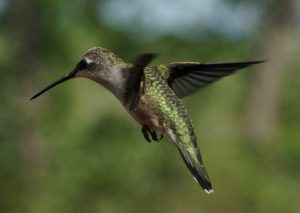
The most common hummingbird in the eastern half of the United States is the ruby-throated hummingbird. Named for the male’s brilliant iridescent throat, this is one bird species that has actually increased in numbers in recent years, a happy thing for those of us who love them dearly.
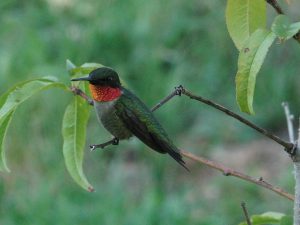
Male ruby-throated hummingbird. Often, the throat will appear black until it catches the right light.
Hummingbird Facts
I spent a good part of the day trying to photograph the hummingbirds in my yard this afternoon, so I thought I would share some of my pictures along with a few facts about them. For example, they’re tiny. You probably already knew that, but did you know that they are so tiny they can get caught in spiderwebs? (They must have a love/hate relationship with spiders because these hummingbirds also use delicate threads of spider silk in nest building, so, don’t kill your orb weavers in order to protect your hummingbirds). The average adult ruby-throated hummingbird weighs only around 3 grams, less than a U.S. nickle coin. The females are typically slightly larger and heavier than the males.
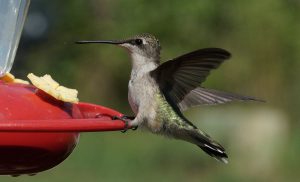
Female ruby-throated hummingbird.
Ruby-throated hummingbirds are territorial; they don’t hang out together in flocks, or even as pairs. I’ve counted eleven in my yard, probably a combination of adults and offspring, but they stay in this area because I have hummingbird feeders out. It’s an understatement to say that they don’t get along.
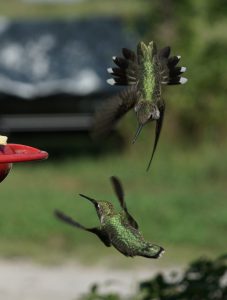
Ruby-throated hummingbirds are solitary. They often fight over territories and feeders.
There is a daily hummingbird war that takes place around the feeders, and the dominant birds spend a tremendous amount of energy trying to chase away interlopers. Fights can be quite violent, with birds appearing to defy gravity with their aerial acrobatics. Interestingly, the dominant bird in my front yard today was a female (or possibly an immature male). In the back yard, it was an adult male.
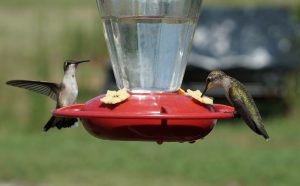
Immature male has wing extended.
Sources of Food
Red or orange tubular flowers are good nectar sources for ruby-throated hummingbirds. Beebalm, cigar flower (cuphea ignea), trumpet vine, agastache, cardinal flower, canna, autumn sage, cleome, four o’clock, foxglove, penstemon, and garden phlox are a few of their favorites. They will also catch and eat mosquitoes and other insects. In fact, they raise their young on insects, good protein for growing bodies. Sometimes, they’ll eat tree sap, and, of course, they will establish territories around hummingbird feeders. (Here are instructions for care and maintenance of hummingbird feeders.)
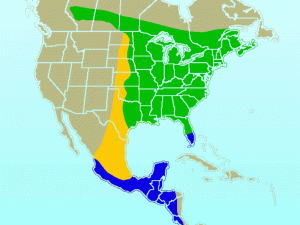
Ruby-throated hummingbird range map. Green is spring and summer, blue is winter, and yellow is migratory range.
It won’t be too long before my hummers start fattening up for the journey south. Ruby-throated hummingbirds winter in South Florida, Mexico, and Central America. Some of them fly all the way across the Gulf of Mexico in a single, unbelievable, 500-mile flight. In spring, when the males first start arriving to stake out their territories and await the females, I am always relieved that my beauties survived such an amazing journey.
Meet Leslie Miller
Leslie Ann Miller shares 3.5 acres in rural Oklahoma with birds, butterflies and wide variety of animals. She is currently transforming her yard with plantings…
Leslie's Recent Posts
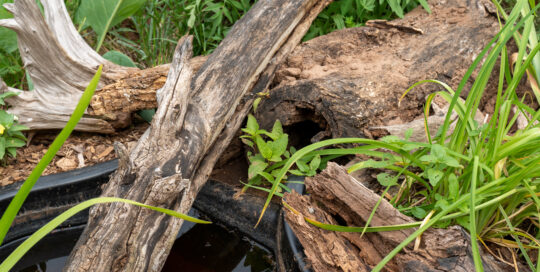
Creating microclimates and microhabitats to benefit wildlife






